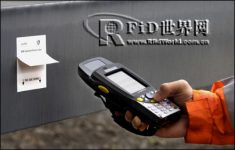
German steel company’s first successful use of RFID technology to track steel plates in the world
[ad_1]
Germany’s ThyssenKrupp Steel is one of the world’s largest steel companies. The company completed the RFID pilot project for labeling steel plates in January this year. The project was launched in October last year, using RFID tags to track the transportation of 1,000 steel plates from Brazil’s origin to a German processing plant.
The successful completion of the pilot project laid the foundation for ThyssenKrupp Steel to further implement steel plate labeling. The company decided: in 2009, after another plant of ThyssenKrupp Steel in Brazil was officially put into production, 100,000 steel plates shipped to Germany each year will be labeled with electronic tags; in the future , The company also intends to expand RFID applications to North America, when the number of steel plates will reach 250,000.
ThyssenKrupp Steel’s steel production capacity in its new plant in Brazil will reach 5 million kilograms per year. The company hopes to quickly and automatically identify the 100,000 steel plates entering and leaving the port each year in order to maximize the use of cranes, said Gerhard Thiel, the ThyssenKrupp manager in charge of the project.
The RFID tags used by ThyssenKrupp Steel, RFID integrator Accenture, and RFID tag manufacturer SATO are specially made SATO FlagTag tags that can be read in a metal environment. The structure of the FlagTag tag is different from the usual paper, it has a flap, so the RFID inlay inside is not close to the object to be attached, but 90 degrees perpendicular to the object to be attached.

SATO FlagTag tag
Since the label does not touch the object being attached, especially the metal object, its readability has been improved. Accenture and SATO changed the size of the label, the composition of the paper and adhesive, and the printer’s folding mechanism so that the label can be folded without punching. The non-porous improves the flexibility of the label. Even if the label is folded flat for a long time during transportation, it can quickly spring back to 90 degrees.
At the Sepetiba port, each steel plate to be shipped is affixed with an RFID tag on the middle side. The RFID inlay of the FlagTag tag is produced by UPM Raflatac and conforms to the EPC Class 1 Gen 2 standard. Its operating frequency is 860-950 MHz, and it can work in all areas where ThyssenKrupp Steel operates. The label contains a unique 10-digit ID number, which is linked to ThyssenKrupp Steel’s information system and contains information such as the steel grade, size, customer, and end point of the steel plate.
The company and its partners choose EPC inlays in consideration of their global popularity and price competitiveness. They also hope that their current system for storing and sharing data has the possibility of using the EPCglobal EPCIS standard.
“Now, steel plates are not only used inside the production line, but steel plates are traded directly between steel plate companies and even with end users. Therefore, the exchange of information through EPCIS may be a trend in the future.
Once the RFID system is officially implemented, the steel plate will be identified 7 times during the transportation from Brazil to the processing plant in Germany.
Due to the high docking fees and limited number of cranes in European ports, the company must limit the unloading time of the staff, which can take up to three minutes for each steel plate. By quickly identifying steel plates, the unloading speed is greatly improved.
Before the pilot project runs, the staff has repeatedly tested the tags to confirm that the tags can work normally in harsh transit environments, such as sea water washing, temperature changes, ice and snow, and collisions. The company claims that although the label reading rate has not reached 100%, it is still quite high, and the company is very satisfied with the results.
[ad_2]



